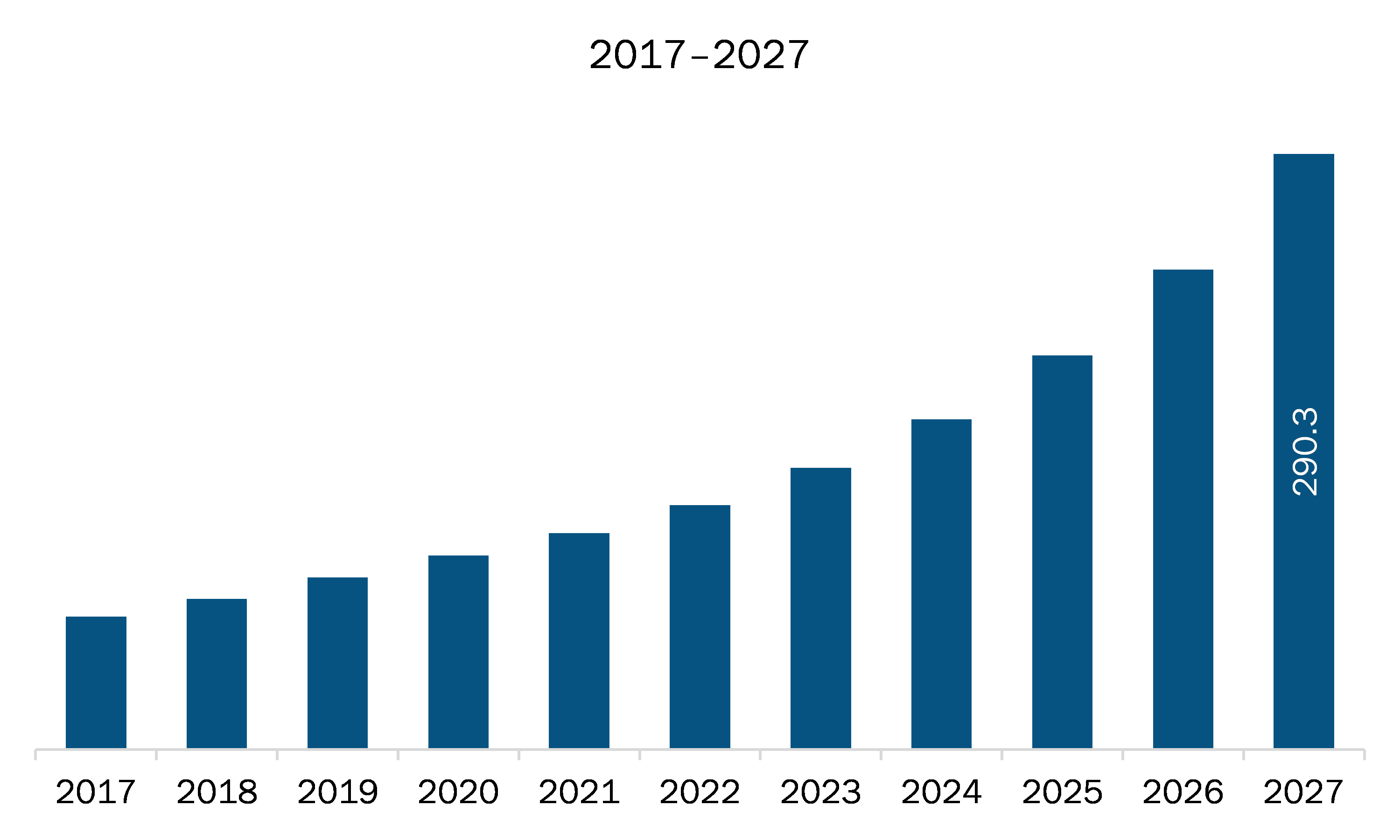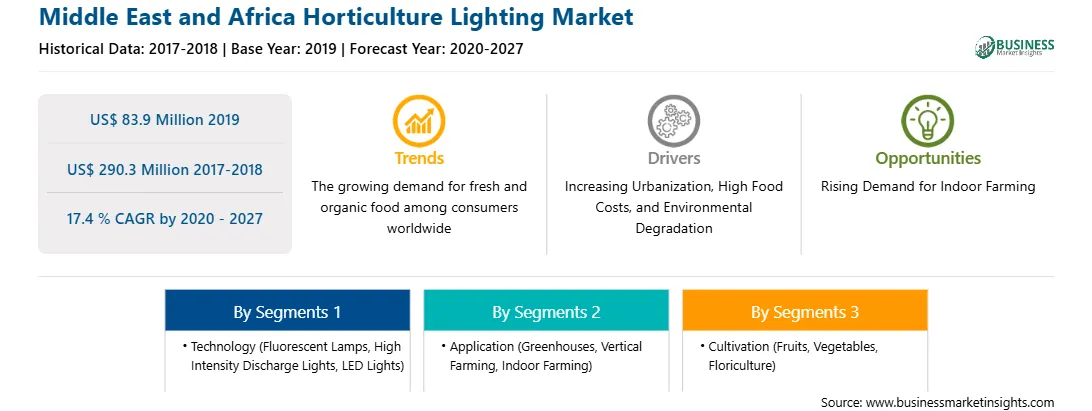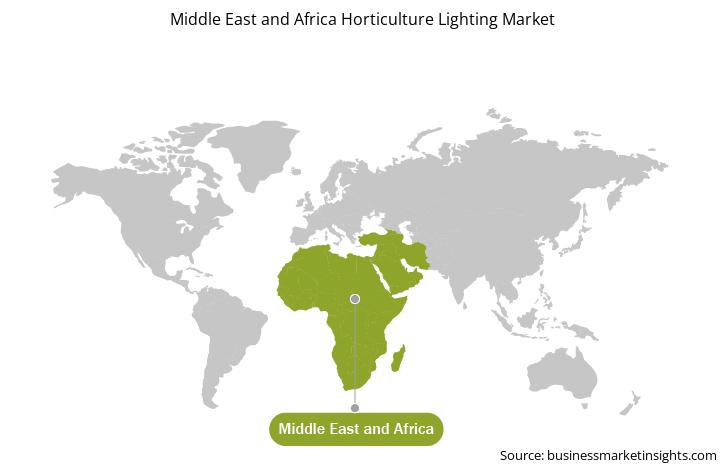Horticulture lighting is an artificial light used to facilitate photosynthesis. This process is beneficial in areas where adequate sunlight is absent. Horticulture lighting also enhances the growth of plants by illuminating them with artificial light. Horticulture's LED lighting technology is gaining traction in the market due to its numerous advantages, such as low power consumption and existing technologies, which enable lower energy costs. Horticultural lighting is used in urban agriculture, multi-layer cultivation, supplemental lighting, and daylight-free cultivation. Due to increasing awareness of sustainable farming, researchers, governments, and organizations have taken initiatives to improve horticulture with efficient and adequate lighting. Increase in demand for advanced lighting-related technologies is expected to boost the growth of the MEA horticulture lighting market. Toshiba and Panasonic have started to support the farmers by providing financial and technical support to establish vertical farms. Such developments in vertical agriculture are boosting the growth of the MEA horticulture lighting market. Various governments are emphasizing on the use of LED lighting technology. Thus, the upsurge in government initiatives is expected to create a significant demand for horticulture lighting in the coming years, which is further anticipated to drive the MEA horticulture lighting market. Again the ongoing COVID-19 pandemic is affecting the MEA region very badly. Among the MEA countries, South Africa has faced the highest number of COVID-19 confirmed cases 611,450. Other major countries that are facing the economic impact of COVID-19 include Iran, Turkey, Saudi Arabia, UAE, Egypt, Morocco, and Kuwait. The region comprises many growing economies such as UAE, among others, which are prospective markets for horticulture lightning providers, owing to the huge presence of investment in vertical farming. The COVID-19 pandemic is going to severely impact the MEA market compared to the other regions since the major problem related to declining oil prices are already affecting the economies of several oil-producing countries in MEA. In addition to this, the factory lockdowns, business shutdowns, and travel bans are further aggravating the economic problems of the countries in the MEA region. Hence, the estimated decline in MEA’s economic condition and impact of COVID-19 on the growth of various industries in the region is expected to negatively impact the growth of the horticulture lightning market in 2020 and 2021.

Strategic insights for the Middle East and Africa Horticulture Lighting provides data-driven analysis of the industry landscape, including current trends, key players, and regional nuances. These insights offer actionable recommendations, enabling readers to differentiate themselves from competitors by identifying untapped segments or developing unique value propositions. Leveraging data analytics, these insights help industry players anticipate the market shifts, whether investors, manufacturers, or other stakeholders. A future-oriented perspective is essential, helping stakeholders anticipate market shifts and position themselves for long-term success in this dynamic region. Ultimately, effective strategic insights empower readers to make informed decisions that drive profitability and achieve their business objectives within the market.

| Report Attribute | Details |
|---|---|
| Market size in 2019 | US$ 83.9 Million |
| Market Size by 2027 | US$ 290.3 Million |
| CAGR (2020 - 2027) | 17.4 % |
| Historical Data | 2017-2018 |
| Forecast period | 2020-2027 |
| Segments Covered |
By Technology
|
| Regions and Countries Covered | Middle East and Africa
|
| Market leaders and key company profiles |
|
The geographic scope of the Middle East and Africa Horticulture Lighting refers to the specific areas in which a business operates and competes. Understanding local distinctions, such as diverse consumer preferences (e.g., demand for specific plug types or battery backup durations), varying economic conditions, and regulatory environments, is crucial for tailoring strategies to specific markets. Businesses can expand their reach by identifying underserved areas or adapting their offerings to meet local demands. A clear market focus allows for more effective resource allocation, targeted marketing campaigns, and better positioning against local competitors, ultimately driving growth in those targeted areas.

The horticulture lighting market in MEA is expected to grow from US$ 83.9 million in 2019 to US$ 290.3 million by 2027; it is estimated to grow at a CAGR of 17.4 % from 2020 to 2027. LED lighting could provide more growth opportunities in future. Increase in requirement for an energy efficient lighting system, rise in penetration of LED as a light source, and decrease in the cost of LEDs is anticipated to accelerate the demand for LED lighting in horticulture during the forecast period. Several developments in LED technology have enabled LED lighting products to penetrate efficiently; thus, offering horticulture lighting market a massive potential for growth. An average LED lasts 50,000 operating hours to 100,000 operating hours or more, which is greater than fluorescent lights. Implementation of LED lighting in horticultural lighting solutions plays a crucial role in high-tech farming. Several major players are introducing LED lights to stay competitive in the MEA market. For instance, Osram GmbH, a Germany-based company, ramped up its new generation LED lighting for horticulture. The product is called Oslon Square Hyper Red. It is the most efficient LED for horticulture lighting with a wavelength of 660 nm. It can provide light to several plants with accurate light composition. Furthermore, with cost-effective LED lighting products, their application in the horticultural industry is expected to increase, which is likely to have a positive impact during the forecast period. All these factors are collectively responsible for bolstering the growth of the MEA horticulture lighting market.
In terms of technology, the LED lights segment accounted for the largest share of the MEA horticulture lighting market in 2019. In terms of application, the greenhouses segment held a larger market share of the MEA horticulture lighting market in 2019. Further, the fruits & vegetables segment held a larger share of the market based on cultivation in 2019.
A few major primary and secondary sources referred to for preparing this report on the horticulture lighting market in MEA are company websites, annual reports, financial reports, national government documents, and statistical database, among others. Major companies listed in the report are General Electric Company; Hortilux Schréder B.V.; Lumileds Holding B.V.; OSRAM Licht AG; Signify N.V.
The List of Companies - Middle East and Africa Horticulture Lighting Market
The Middle East and Africa Horticulture Lighting Market is valued at US$ 83.9 Million in 2019, it is projected to reach US$ 290.3 Million by 2027.
As per our report Middle East and Africa Horticulture Lighting Market, the market size is valued at US$ 83.9 Million in 2019, projecting it to reach US$ 290.3 Million by 2027. This translates to a CAGR of approximately 17.4 % during the forecast period.
The Middle East and Africa Horticulture Lighting Market report typically cover these key segments-
The historic period, base year, and forecast period can vary slightly depending on the specific market research report. However, for the Middle East and Africa Horticulture Lighting Market report:
The Middle East and Africa Horticulture Lighting Market is populated by several key players, each contributing to its growth and innovation. Some of the major players include:
The Middle East and Africa Horticulture Lighting Market report is valuable for diverse stakeholders, including:
Essentially, anyone involved in or considering involvement in the Middle East and Africa Horticulture Lighting Market value chain can benefit from the information contained in a comprehensive market report.